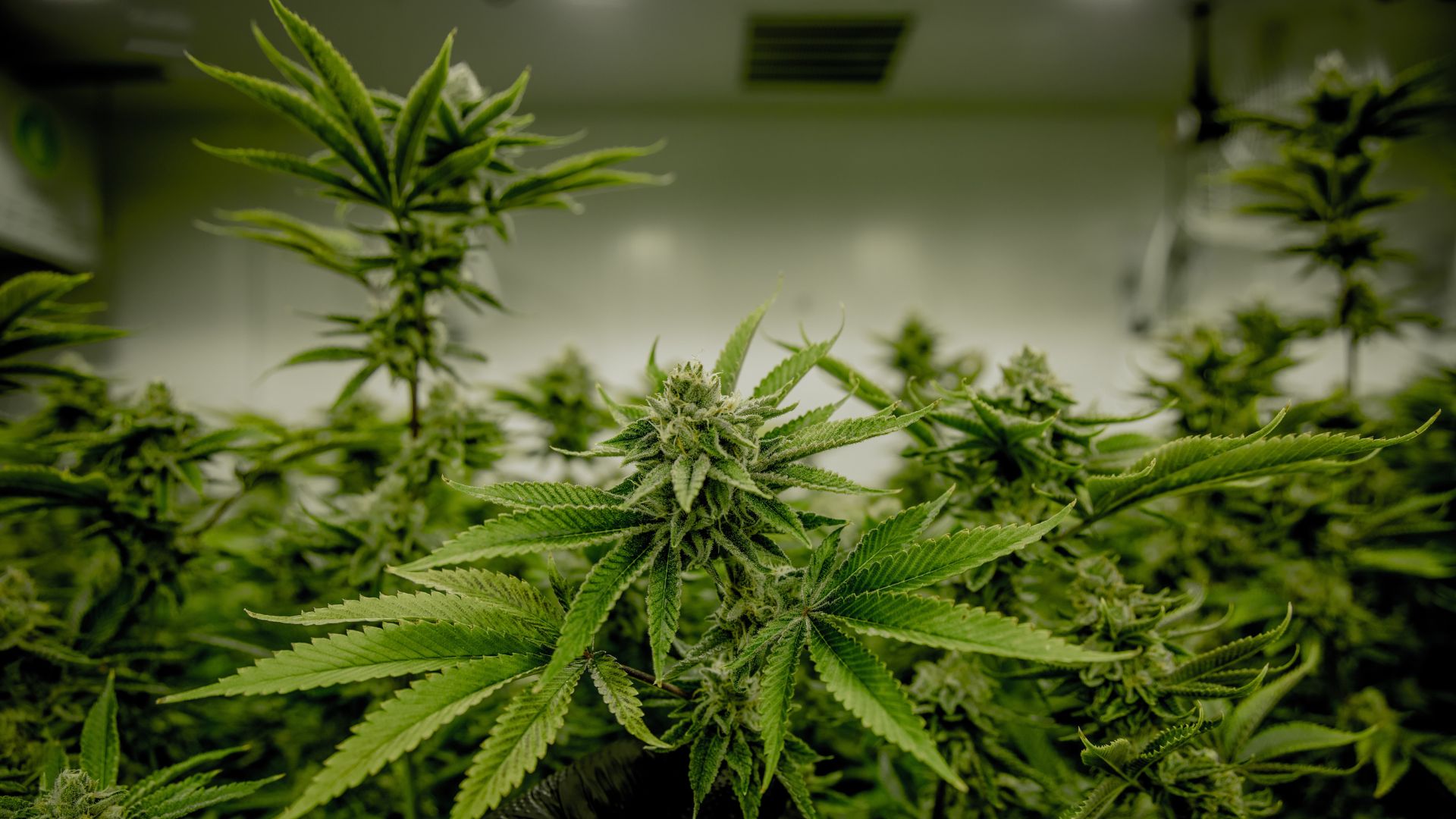Have you ever wondered about the intricate components that make up the cannabis plant? Join us on a journey through the fascinating anatomy of this botanical marvel, where each part plays a unique role in the plant’s growth, development, and therapeutic properties. This comprehensive guide delves into each element, from the plant’s earliest germination days, to its vegetation stage where it grows, to the flowering stage in which the cannabis we know and love begins to emerge in its familiar form.
10 parts of a cannabis plant
1. Flower
Cannabis flower is the most recognizable part of the plant — after all, it’s what you pick up at the dispensary. These small, cone-like structures develop during the plant’s flowering stage and continue to grow as the plant enters maturity.
Flower contains the highest concentration of cannabinoids like Tetrahydrocannabinol (THC) and Cannabidiol (CBD), as well as a variety of terpenes like myrcene, caryophyllene, limonene, and more. Flower is only produced by female plants and must be dried and cured before you try to smoke it or turn it into edibles.
- What is flower’s purpose on the plant? Cannabis flower is the reproductive organ of a female cannabis plant. It attracts pollen from male cannabis plants and develops seeds which, when dropped at the end of the plant’s life, germinate and grow into the next generation.
- When does flower develop? Flower development during the flowering stage of the cannabis plant’s life cycle. Most strains flower in 8 to 9 weeks, but some can take longer.
- Where is flower found on the plant? Flowers are typically located at the nodes of the cannabis plant, where the branches and leaves meet. They can also form a dense cluster at the top of the plant known as a cola.
2. Cola
The cola, also referred to as a “bud site,” is a distinctive cluster of buds tightly growing together on the cannabis plant. The cola typically takes center stage at the top of the plant, where it can receive the most light.
- What is the purpose of the cola? The colas are the densest clusters of cannabis flower and most likely to produce a high volume of seeds when pollinated.
- Where are colas found on the plant? While smaller colas can be found along the lower branches, one main cola is generally positioned at the top of the plant, forming a central cluster of buds. These dense colas represent a significant portion of a plant’s yield when the flower is harvested.
- When do colas develop? Cola development typically takes place as the plant enters the flowering stage. As flowers grow and mature, a concentration of buds gathers at the top of the plant.
3. Stigma and Pistils
The pistils are a central part of the female cannabis flower’s reproductive system, and they house thin strands known as stigmas. These stigmas resemble the appearance of hair and collect pollen transported from male plants. They also shift in color from white to yellow, orange, red, or brown as the plant matures. If you ever noticed little colorful “hairs” on the cannabis flower you buy at Queen City, those are stigmas.
- What is the purpose of stigmas and pistils? These parts are for reproduction. When pollen lands on the stigma, it travels down to the ovule, resulting in fertilization and seed production. Without pistils, cannabis plants can’t develop seeds.
- Where are stigmas and pistils located on the plant? Pistils are situated within the female cannabis flower. They typically appear as white hair-like structures on the buds when they first form.
- When do stigmas and pistils develop? Pistils begin to appear during the flowering stage and appear in a white or light green color. When the plant is ripe for harvest, the pistils will shift to darker hues like orange, red, or brown.
4. Bracts
Bracts are the small, pear-shaped leaves enveloping the reproductive cells of the female cannabis plant. They serve a protective role during the crucial stages of seed development, surrounding and shielding the seed pod when a female plant encounters pollen from a male cannabis plant.
Beyond protection, bracts are covered in resin glands, which house the highest concentration of cannabinoids and terpenes within the plant.
- What is the purpose of the bract? The purpose of bracts is two-fold. They provide protection during the crucial stages of seed development and house resin glands full of cannabinoids help to protect the plant during its life.
- Where are bracts located on the plant? Bracts are typically positioned around the reproductive cells of the female cannabis plant, serving as protective coverings during seed development.
- When do bracts develop? Female cannabis plants typically develop an oval-shaped bract with hairs or pistils during the pre-flowering stage.
5. Calyx
Located at the base of the flower, calyx development is an initial sign that flowering has started. They are instrumental to the plant survival and contribute significantly to the formation of buds.
- What is the purpose of the calyx? The calyx serves as a protective structure for the developing seeds and plays a crucial, stabilizing role in the formation of buds.
- Where are calyxes located on the plant? Calyxes are situated at the base of the cannabis flower, near where the flower meets the stem.
- When do calyxes develop? Calyxes become prominent during the flowering phase of a cannabis plant’s growth. They’re one of the earliest indicators of the transition into the reproductive stage.
6. Trichomes
Originating from glands on the leaves, stems, and calyxes of both the female and male cannabis plants, trichomes were initially developed by plants to serve as a shield from potential threats in the wild. Despite their small size, they play a pivotal role in the cannabis plant. These tiny, crystal-like structures are basically potency factories, secreting terpenes and therapeutic cannabinoids like THC and CBD.
- What is the purpose of trichomes? Trichomes protect the cannabis plants from insects, animals, and disease. Most importantly, however, they facilitate the production of hundreds of terpenes and cannabinoids to create the aromas and effects of each strain.
- Where are trichomes located on the plant? Trichomes can be found all over the cannabis plant, but they tend to cluster most heavily on the leaves, stems, bracts, and calyxes of male and female cannabis plants.
- When do trichomes develop? Trichomes generally start forming during the transition from the vegetative state into the flowering process but the bulk of trichome development happens in the late flowering stage.
7. Stem
The stem of the cannabis plant, much like any other plant, is a fundamental component of the structure. It not only maintains stability but also plays a role in the optimization of the plant’s growth and development. It acts as the spine of the plant and main channel by which nutrients travel, providing a base from which branches and fan leaves extend, enabling the plant to absorb light for photosynthesis.
- What is the purpose of the stem? Serving as the primary support structure, the stem provides stability to the entire cannabis plant. It also plays a role in transporting nutrients and water from the roots to other parts of the plant.
- Where is the stem located? The stem of the cannabis extends from the roots to the upper parts of the plant.
- When does the stem develop? The stem is present from the early stages of the cannabis plant’s growth and undergoes continuous development throughout its life cycle.
8. Node
Nodes are pointed bumps that emerge from where the main stem and the leaf intersect. Some nodes host buds, but not all. Nodes are generally considered pivotal in determining the sex of a cannabis plant, as some nodes give rise to pollen sacs in male plants, while pistils develop in females.
- What is the purpose of the node? Nodes serve multiple functions, including facilitating branching, hosting bud development, and indicating the sex of the plant.
- Where are nodes located on the plant? Nodes are situated along the stem of the cannabis plant, where the branches emerge into leaves.
- When do nodes develop? Nodes develop during the early stages of growth and become increasingly prominent as the plant progresses through its life cycle. The sex of a plant will become evident in the nodes during the pre-flowering stage of the life cycle.
9. Fan leaves
Big — and iconic — fan leaves are crucial for the plant’s photosynthesis process, capturing sunlight to produce energy. Fan leaves produce little to no resin and are routinely removed from the final harvest process to enhance visual appeal.
- What is the purpose of fan leaves? These leaves act as “solar panels” that enable the plant to undergo photosynthesis. They soak up plenty of sunlight and turn that energy into food to fuel growth.
- Where are fan leaves located? Fan leaves typically protrude directly from the stem and branches of cannabis plants.
- When do fan leaves develop? Female plant seedlings use all of the energy to grow fan leaves during the vegetative state of the cannabis plant.
10. Sugar leaves
Sugar leaves, which are much smaller than fan leaves, serve as reservoirs for resin. Positioned around the buds, these smaller leaves are rich in trichomes; the sugary-looking coating of the structures is where they get their name. While they may not have the iconic appearance of fan leaves, the high concentration of trichomes on sugar leaves makes them a great resource for products like hash and extracts.
- What is the purpose of sugar leaves? Sugar leaves contain a high volume of trichomes, which are dense in protective cannabinoids and terpenes. This helps protect the plant’s reproductive organs at the most crucial time in its life. As a result, they are also commonly used in the manufacturing of cannabis products like hash and oil.
- Where are sugar leaves located on the plant? Sugar leaves are small, resin-coated leaves that form around the buds of the cannabis plant.
- When do sugar leaves develop? Sugar leaves develop and grow out of cannabis colas during the plant’s flowering stage.
How are cannabis plants grown?
Cannabis cultivation is a nuanced and intricate process typically shaped by the choice of growers. The process typically begins with a decision to start with seeds or clone sets as the foundation for the entire cultivation experience. Each method brings its own set of advantages and considerations, catering to the needs and goals of cultivators.
From seeds
Cannabis cultivation often begins with seeds. Each seed harbors its genetic blueprint. Growers generally opt for seeds due to their inherent diversity, allowing for cultivar (strain) exploration and experimentation in the development of new cultivars. Cultivators may choose specific seeds based on desired attributes, such as potency or flavor profile. While seeds provide a natural starting point, they require careful germination.
From clones
Cloning is a popular method where a cutting, or “clone,” is taken from a mature, healthy cannabis plant and cultivated to develop its root system. Cloning offers the advantage of replicating the exact genetic makeup of the donor plant and is often used by growers to preserve specific strains or create hybrids. While genetically stable, it requires extra attention to the cutting’s environment and care during the rooting process.
Differences between male and female plants
Typically, it is possible to determine the sex of the plant 4 to 6 weeks into growth. Some things to pay particular attention to include:
Physical differences
- Male plants: Typically upright and less bushy, male cannabis plants produce small pollen sacs.
- Female plants: Bushier female cannabis plants develop pistils that resemble small, hair-like structures. These pistils collect pollen for fertilization, leading to flower production.
Consumable parts
- Male plants: While crucial for seed production and cross-breeding, male cannabis plants are typically not consumed for recreational or medicinal purposes due to low cannabinoid content.
- Female plants: Flower of a female cannabis plant is the part primarily consumed by humans. These buds are rich in cannabinoids including THC and CBD, as well as flavorful terpenes.
Which parts of the cannabis plant are smokable?
When people smoke cannabis, they’re smoking the dried and cured flower from a female cannabis plant. These buds are filled with trichomes and infused with cannabinoids and terpenes that result in the effects associated with cannabis. Whether rolled into a joint or nestled in a pipe, the flower is what shapes your experience.
Indica, Sativa, and hybrid cannabis plants: The physical differences
Indica, Sativa, and hybrid cannabis plants each boast distinct characteristics that contribute to their unique effects. While you should never rely solely on physical characteristics when choosing what’s best for your experience, here’s a quick primer on the typical physical differences between cannabis varieties.
- Indica: Characterized by a short and stocky structure featuring leaves that are broad and “chunky.”
- Sativa: Taller and more slender in appearance, sativa plants can reach up to 10 feet fall and are characterized by sparse foliage. Leaves are typically narrow, thin, and pointed.
- Hybrid: As a combination of indica and sativa, hybrid plants vary in their structure as much as their effects. Hybrid plants can vary widely in appearance, with some leaning toward the compact nature of indicas and others adopting taller attributes of sativas.
As hybrids have dominated the cannabis space, these appearances have become more varied. In some cases, a short, bushy plant may actually be sativa-dominant, and a tall, stalky plant may have more indica genetics. Remember, a plant’s phenotype — or physical appearance — is simply a baseline way to guesstimate its genetic makeup, and it’s not the main way to assess how a cannabis product might make you feel.
What about hemp?
Hemp is a low-THC variety of Cannabis sativa L., exhibiting their own distinctive features. Hemp plants are generally tall and slender, featuring thinner and narrow leaves arranged in a relatively spaced-out manner. The buds of hemp are small and inconspicuous, with a lower density of trichomes.
The key distinction between hemp and cannabis, however, lies in THC content. Hemp is legally defined as containing 0.3% THC or less, allowing for its legality and suitability for various industrial processes such as fiber, seed production, and CBD extraction.
Elevate your cannabis knowledge journey with Queen City
As you navigate the intricate nuances of cannabis, look no further than Queen City dispensary for an unparalleled shopping experience where a wealth of knowledge comes to life. Offering a curated selection of premium strains and products, our dispensary is your gateway to an extraordinary cannabis adventure. Stop by in person or visit our online menu to see what’s in store for you today.


